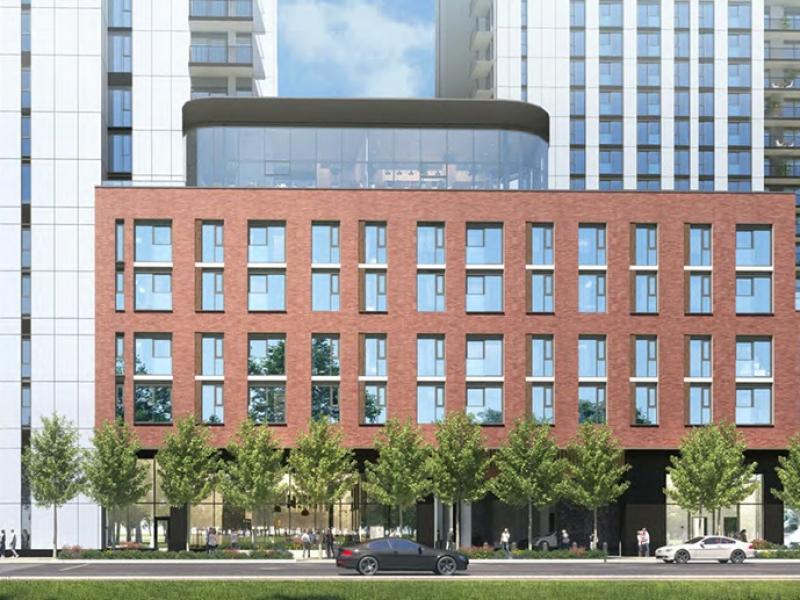As office vacancy rates continue to tighten in Canada’s largest markets, almost 13 million of the country’s more-than-15-million square feet of office space under construction is concentrated in Toronto, Montreal and Vancouver, a mid-year report from Avison Young reveals.
AY’s Mid-Year 2018 North America and Europe Office Market Report indicates the largest share of that space, by far, is in Toronto where 8.5 million square feet are under development – 7.2 million of it in the downtown. Montreal is a distant second at 2.5 million square feet and Vancouver is third with more than two million square feet.
In the case of Toronto, the volume of construction compares favourably with other major international cities such as London, Mexico City, Washington and New York, Avison Young says in the report.
“It’s great to see so much confidence on the part of developers as they respond to the supply-demand imbalance in many markets,” said Avison Young chair and CEO Mark Rose in a prepared statement. “As always in this industry, the inherent risk is that circumstances could change, resulting in an oversupply of product at the time of delivery.
“In many cases, this scenario is the result of external economic and geopolitical factors. This time around, however, the new influences of disruptive technologies and increasing co-working space availability are also affecting how and where people work, potentially impacting the office sector from within – and challenging conventional wisdom.”
There are several trends driving the activity in Toronto and Vancouver (and to a lesser extent, Montreal and several of Canada’s other larger markets), including the desire by many companies to locate, or relocate, in a downtown area.
“Intense competition for office space”
“Intense competition for office space continues to bolster office market fundamentals across Canada – especially in downtown markets,” said Bill Argeropoulos, principal and practice leader, research (Canada) for Avison Young in the statement.
“Demand from traditional sectors is being augmented by the proliferation of domestic and global technology and co-working firms, ongoing urbanization and a burgeoning millennial workforce – all part of Canada’s emerging innovation economy.”
The report covers the office markets in 67 metropolitan regions in Canada, the U.S., Mexico, the United Kingdom, Germany and Romania. In Canada, it tracks Calgary, Edmonton, Halifax, Lethbridge, Montreal, Ottawa, Regina, Toronto, Vancouver, Waterloo Region and Winnipeg.
“Urbanization – partly attributable to growth in the technology sector – has created a noticeable gulf between downtown and suburban vacancy rates in emerging tech hubs such as Vancouver, Toronto, Waterloo Region, Ottawa and Montreal,” Argeropoulos said in the statement.
“Given tight conditions and upward pressure on rents in some of the nation’s downtown markets, and with little or no near-term supply relief, suburban markets – particularly those offering transit connectivity and other urban amenities – may be the beneficiaries of overflowing tenant demand during the next couple of years.”
Suburban absorption outpaces downtown
During the past year, Canada’s overall suburban office absorption actually outpaced downtown absorption.
Suburban markets combined for absorption of nearly 3.4 million square feet – reducing the suburban vacancy rate a half point to 13.1 per cent. Winnipeg has the tightest at just 5.5 per cent, though that stat could change in coming months as major downtown office completions pull in tenants from the suburbs.
The downtowns combined for more than 2.2 million square feet of absorption – led by Toronto, Vancouver and Edmonton. This reduced the national downtown vacancy rate 80 basis points (bps) year-over-year to 10.5 per cent.
Of particular note is Toronto’s downtown vacancy rate (2.2 per cent), the lowest in North America. Downtown vacancy in Toronto and Vancouver remains significantly lower than suburban vacancy, and is one of the factors driving those statistics.
Other report highlights
Other notable Canadian highlights:
– Canada’s 530 million-square-foot office market recorded positive absorption of almost six million square feet in the 12 months ending June 30, led by strong gains in Toronto, Vancouver and Montreal – offsetting losses in the struggling, but stabilizing, Calgary market;
– Canada’s overall office vacancy retreated 60 bps year-over-year to 11.5 per cent. Vacancy declined in six of 11 markets. Calgary (23.5 per cent) was unchanged from mid-2017 and remains the highest vacancy rate, Toronto (6.2 per cent) now has the lowest, while Waterloo Region (up 360 bps to 17.1 per cent), Edmonton (down 320 bps to 14.1 per cent) and Ottawa (down 320 bps to 9.5 per cent) recorded the biggest swings;
– New office completions slowed to 3.6 million square feet delivered in the 12 months ending at mid-year 2018, down from nearly 10 million square feet a year ago.;
– Of the 15 million square feet under construction, 52 per cent is preleased;
– Gross rents were weighed down primarily by Calgary and, to a lesser degree, Ottawa. The downtown average class-A gross rent was down $1.97 per square foot to $38.83, and the suburban dipped $0.43 to $31.86. Similar to 2017, Vancouver boasted the highest downtown class-A gross rent at $59 and Regina edged out Vancouver for the highest suburban class-A gross rent at $40 per square foot.








